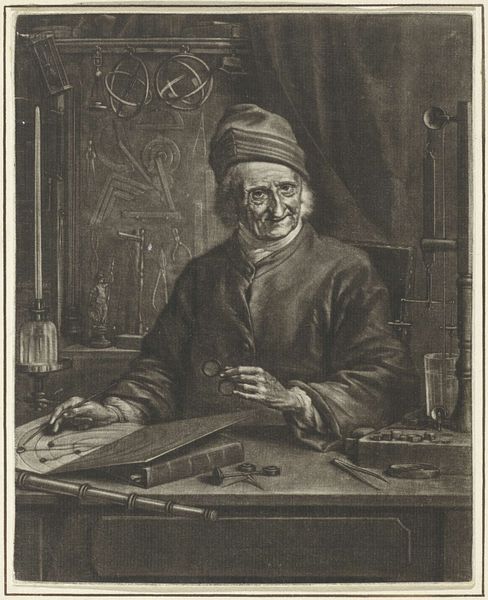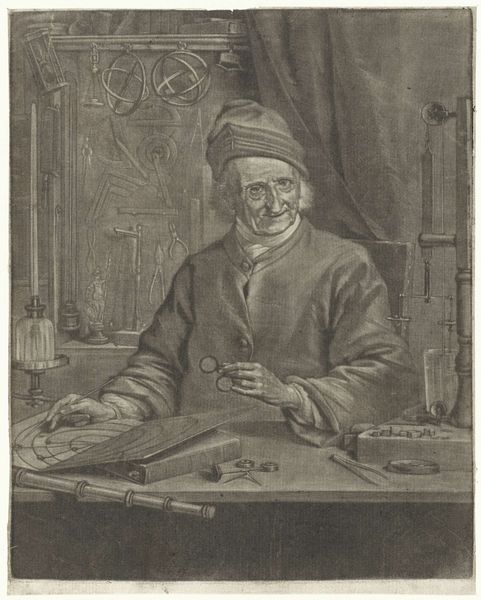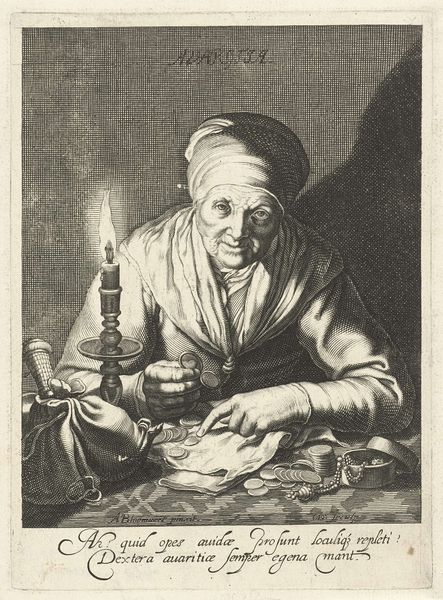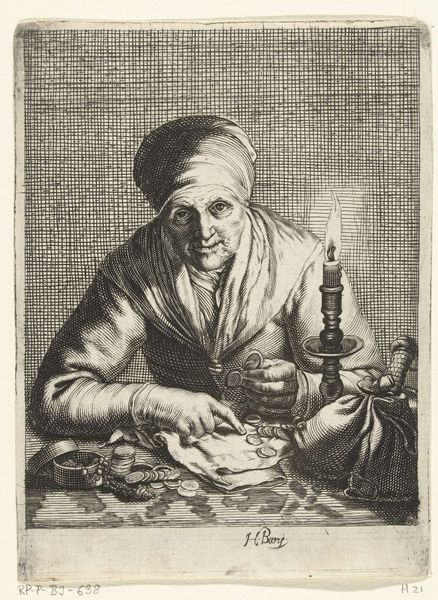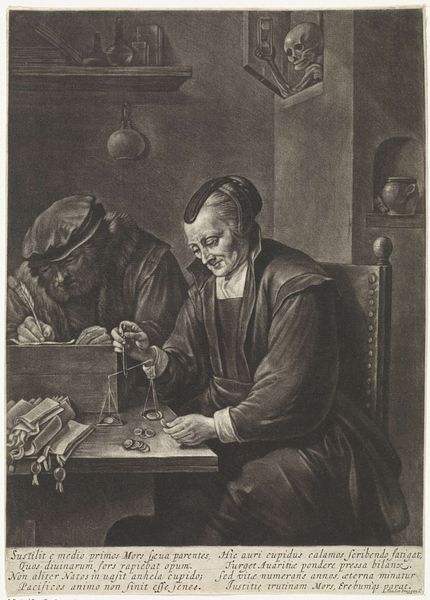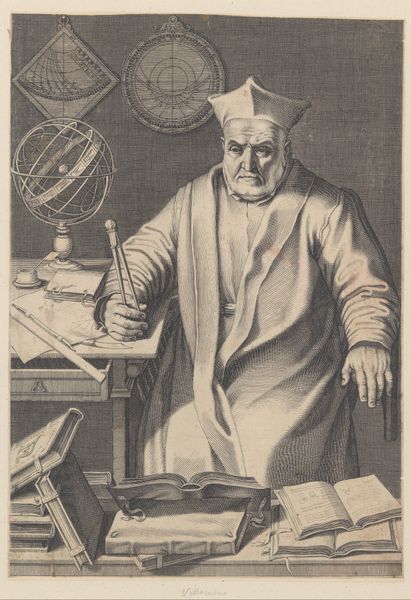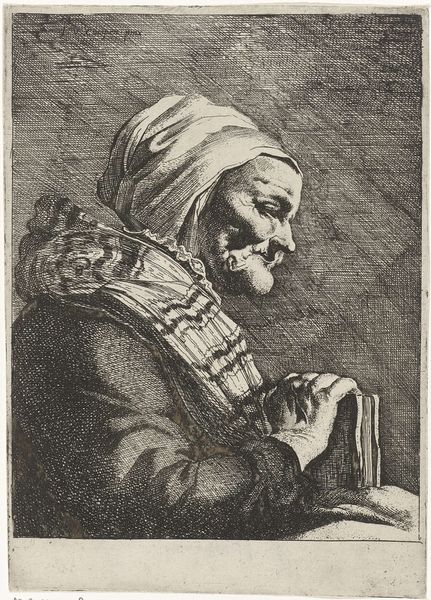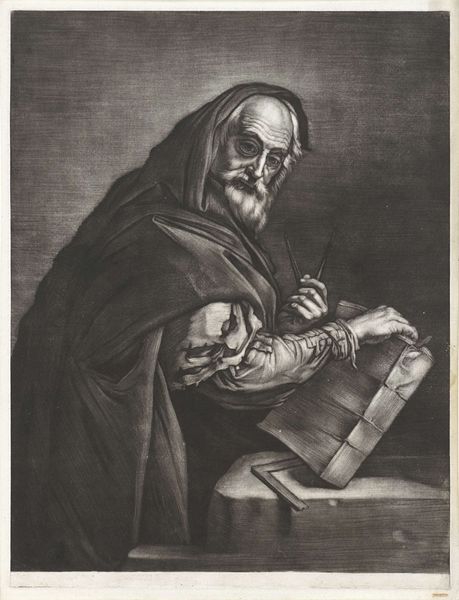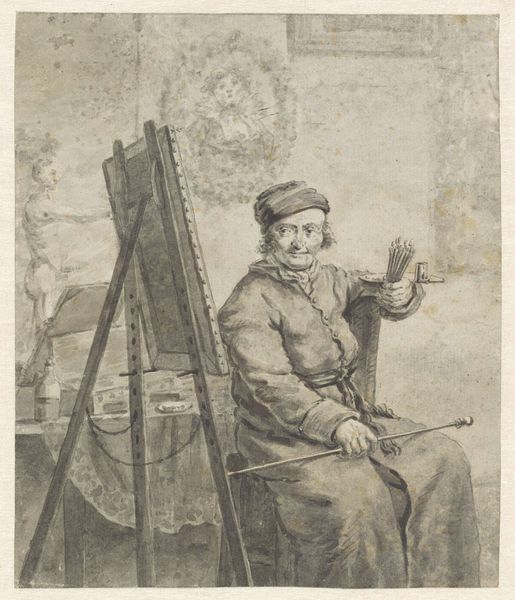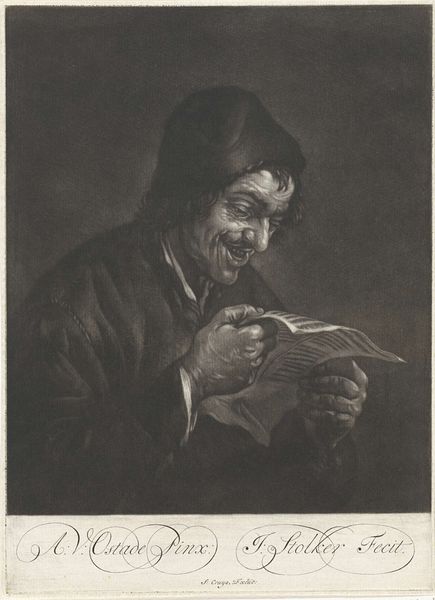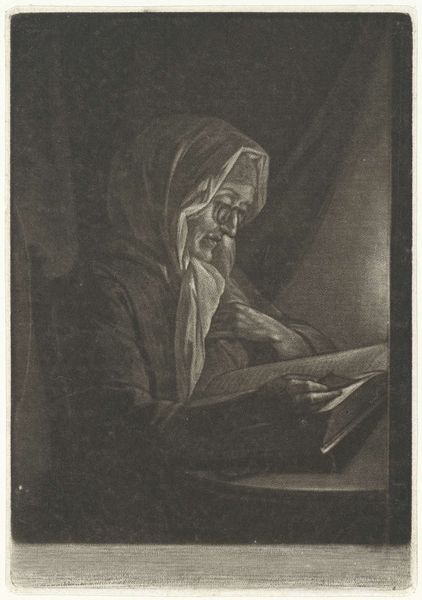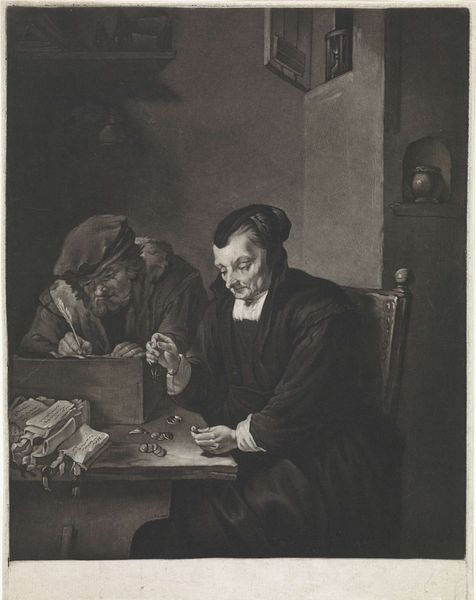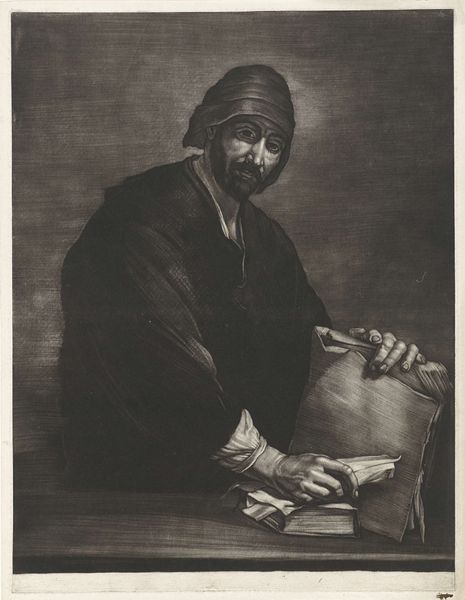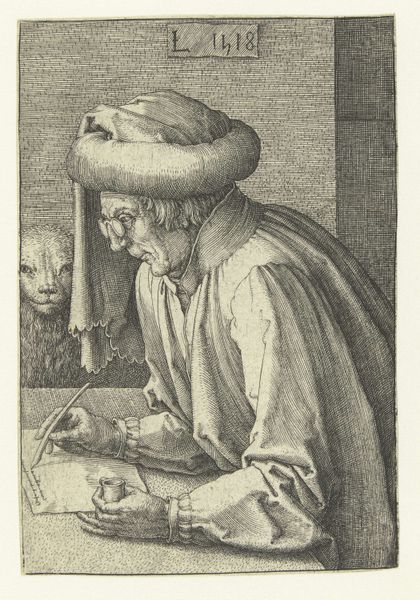
drawing, paper, dry-media, pen
#
portrait
#
drawing
#
paper
#
dry-media
#
pen
#
portrait drawing
#
history-painting
#
portrait art
#
rococo
Dimensions: height 221 mm, width 179 mm
Copyright: Rijks Museum: Open Domain
Curator: Oh, this is a beauty, isn't it? What a feast for the eyes. The artwork that's before us is titled, "Portret van Arnold Marcel". Aert Schouman, working in 1748, rendered this intimate scene using pen and dry media on paper. It resides in the Rijksmuseum. What are your first impressions of it? Editor: It feels like stepping back in time. There's such detail in the etching. It looks very…scholarly, if I can put it that way, with all of the instruments. Almost as though it’s more a portrait of the mind than the man, and there are a lot of curios. Curator: Exactly! And isn’t it just brimming with symbols of the Enlightenment? Here you can see Marcel surrounded by the tools of a polymath. Notice the scientific instruments – globes, lenses, measuring devices… He's presented as a figure deeply immersed in the world of learning and discovery. Schouman clearly portrays not just Marcel the man but also Marcel the intellectual. He would have been making reference to a rising merchant class that was more inclined to purchase portraits than their patrons. Editor: Yes, and those spectacles he’s holding. They could be props, but I think they're the key to how we understand how art in that time was more inclusive and about who had enough capital to buy into the cultural zeitgeist. A true celebration of Rococo exuberance but not at the expense of intellect. What do you make of the fact that it's rendered in dry media instead of the traditional oils that you find a lot in painting in the Dutch Golden Age? Curator: Ah, now that is what makes this drawing so intriguing. Dry media on paper, it provides a stark contrast to the elaborate grandeur often seen in oil portraits from the Golden Age. I find it incredibly poignant—it brings the portrayed person down to earth, allowing for a more approachable quality of human connection with its subject. It shows we can value the human for what they have accomplished in life more than their riches, for one thing. The material makes it more than a typical historical document, for sure! Editor: Precisely! Looking at this "Portret van Arnold Marcel", I can almost feel Schouman’s touch on paper. It also illustrates how patronage in Holland and generally in Europe allowed for diversity in painting. Not just genre-wise but also when it comes to representing middle-class patrons. Curator: It certainly highlights how the power and wealth from maritime power shaped people's tastes, then, and informs how art is shaped now. It is a beautiful record of human intellect.
Comments
No comments
Be the first to comment and join the conversation on the ultimate creative platform.
